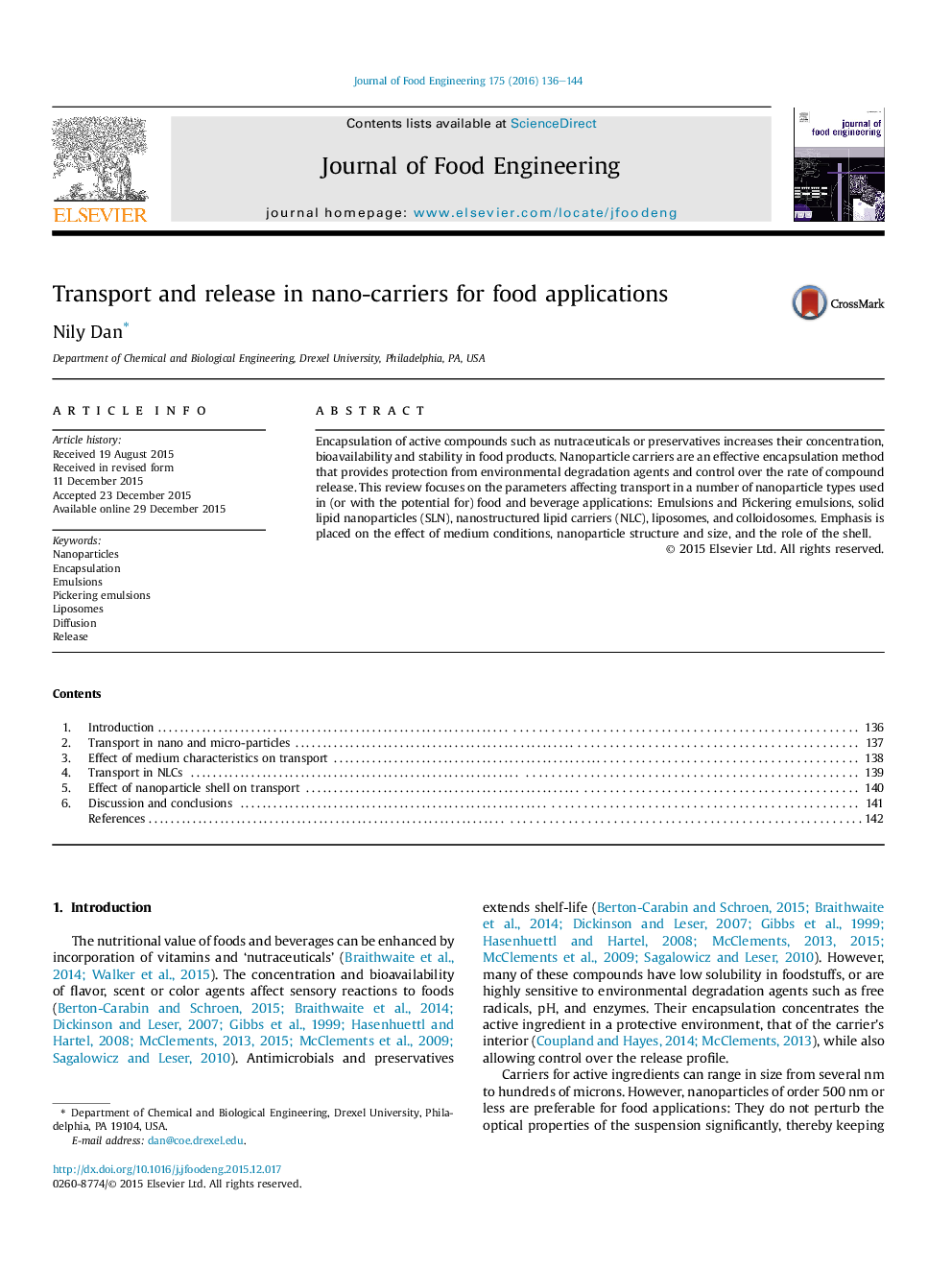| Article ID | Journal | Published Year | Pages | File Type |
|---|---|---|---|---|
| 222752 | Journal of Food Engineering | 2016 | 9 Pages |
•Nanoparticles can effectively encapsulate active compounds in food-related products.•Transport into or out of the carriers is dominated increases with the particle radius squared.•Transport into or out of the particle depends on the surrounding medium conditions.•Particle properties (phase, domain distribution, the presence of a shell) also affect the rate of release.
Encapsulation of active compounds such as nutraceuticals or preservatives increases their concentration, bioavailability and stability in food products. Nanoparticle carriers are an effective encapsulation method that provides protection from environmental degradation agents and control over the rate of compound release. This review focuses on the parameters affecting transport in a number of nanoparticle types used in (or with the potential for) food and beverage applications: Emulsions and Pickering emulsions, solid lipid nanoparticles (SLN), nanostructured lipid carriers (NLC), liposomes, and colloidosomes. Emphasis is placed on the effect of medium conditions, nanoparticle structure and size, and the role of the shell.
